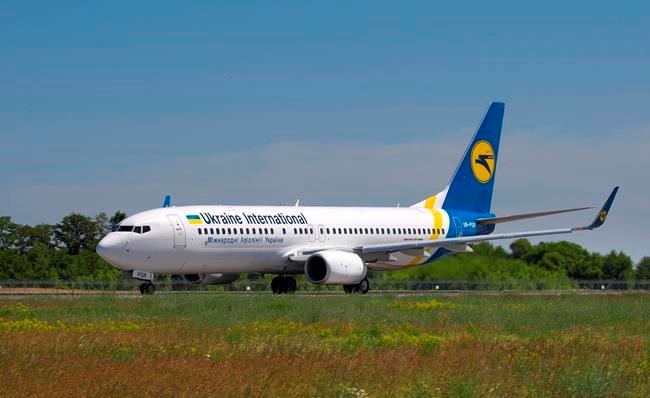Commercial airline pilots flying out of Tehran's airport know a simple rule, says Ross Aimer, a former United Airlines captain who has flown there.
You don't turn right, because that takes you towards the Alborz mountain range. The Ukraine International Airlines flight that went down shortly after take-off Wednesday turned right.
That turn, among other evidence, suggests the crew knew something had gone horribly wrong. The crash that followed killed everyone on board, including at least 63 Canadians and 75 more people who were heading to this country.
And now multiple western authorities, including Prime Minister Justin Trudeau, say they believe a surface-to-air missile was the cause.
How does a surface-to-air missile system work?
Most systems are automated and radar-based. The radar sends out a signal and gets a return off something flying. A computer system processes what it has pinged — taking into account things like speed, direction of travel and elevation, among other factors — and then someone on the ground reviews the results to see if the object is a fighter jet, a commercial airliner or something else.
"It's not a precise match and depending on the system, there's greater or lesser degrees of actual interpretation of the information. So you get something that's not always 100 per cent accurate," says defence analyst David Perry of the Canadian Global Affairs Institute.
Perry says the weapons systems the Iranians use are a mix of current Russian technology and some equipment that is far older.
How would a surface-to-air missile system fire at a commercial airplane?
These surface-to-air missile, or SAM, systems typically have three states: "Weapons tight," meaning a crew fires when it's confirmed the target is hostile; "weapons hold," which limits firing to self-defense or on a specific order; and "weapons-free," which, as the name suggests, allows firing without restriction.
A local crew, in error, could have set the system to "free" status. It could have automatically locked on to the Ukrainian plane when the airliner entered the missile system's surveillance zone and fired, said retired Canadian lieutenant-general D. Michael Day.
What would the pilots of the plane have seen or heard?
Aimer, the former pilot, said some planes have warnings that alert pilots to a missile threat, and some planes — such as Air Force One or those flown by Israeli airline El Al — would have countermeasures designed to help the plane evade a missile strike. But most civilian airliners don't have warning indicators, nor is such a threat something most commercial pilots train for.
"There's nothing really… any pilot can do to evade an incoming surface-to-air missile. You just get hit and you're done," said Aimer, now CEO of California-based Aero Consulting Experts.
Is that what happened here?
The Iranian air defences would likely be linked to the civil aviation system, meaning weapons crews would have likely known a plane had just taken off from the airport, said James Fergusson, deputy director of the Centre for Defence and Security Studies at the University of Manitoba.
Day said Iran would have likely had its own civilian planes flying around the area as well, particularly so close to Tehran's airport.
But Day said if Prime Minister Justin Trudeau was willing to suggest the cause was an Iranian missile, the intelligence had to be airtight and unequivocal.
"In probability, this means that there is some type of electronic evidence that the Iranian air-defence system identified, acquired and engaged the plane," he said.
Richard Aboulafia, an aviation analyst with Teal Group in the Washington, D.C., area, said an unconstrained or over-active air-defence system seems like one of the likeliest causes for the crash because "planes just don't do this."
"Uncontained turbine failures," when an engine breaks up while rotating and parts punch out of the casing, are not unheard-of. One caused the death of a passenger on a Southwest Airlines Boeing 737-700 in 2018. But such an event wouldn't have resulted in the wreckage seen in pictures and video from the crash site, he said.
"Technical problems don't look like this. It blew up," he said in an interview Wednesday.
"Uncontained turbine failures don't blow up. Yes, bad things happen, things come shooting out the back, it can rupture wires and control lines and do terrible things. But just blow up? No."
Iran has denied a missile was the cause of the crash. Its civil aviation authority on Thursday called the theory "scientifically impossible."
What kind of evidence would investigators look for to confirm the cause?
The first step would be to look at the wreckage of the plane and the remains of the deceased passengers and crew for residue from a missile strike, kerosene residue if fuel tanks caught fire, and shrapnel to see if pieces come from a missile or an engine, Aimer said. He said investigators would also pry information from the plane's flight data and voice recorders.
Iran leads the investigation under rules set out by the International Civil Aviation Organization, as the country where the crash happened.
Iran might give the recorders to another country, possibly France or Canada, that has the expertise to do the work, though not the United States because of ongoing tensions.
Canada's Transportation Safety Board said in a statement Thursday that it had accepted Iran's invitation to be part of the crash probe, and investigators are making arrangements to visit the site.
Aimer said the crash site and its evidence appear to have been contaminated by wreckage moved without being properly catalogued for its location in the debris field, putting investigators at a disadvantage.

.png;w=120;h=80;mode=crop)

